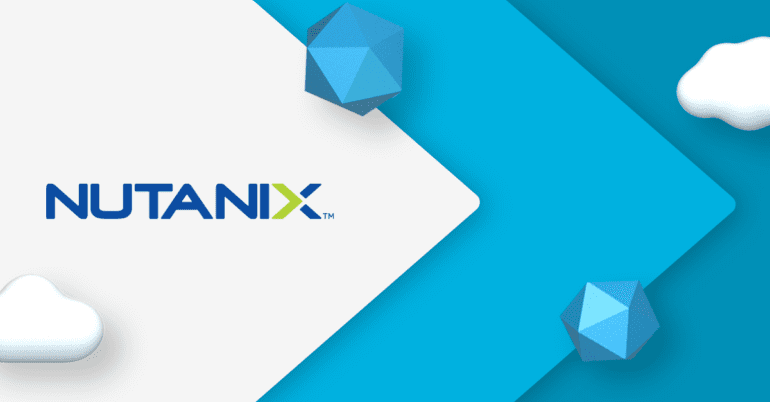TL;DR:
- HCI is gradually replacing SAN for various workloads at a conservative pace.
- Nutanix sees HCI as an additive rather than a wholesale SAN replacement, allowing customers to retain prior investments.
- NAS and object storage replacement are growing as capacity-dense nodes make scale-out systems cost-competitive.
- HCI’s strengths lie in simplified operations and cost-effectiveness, catering to organizations seeking to focus on application development.
- Nutanix anticipates HCI market growth, driven by its unified cloud operating model.
- Nutanix’s offerings, like the Nutanix Cloud Platform (NCP), provide a seamless experience and flexible licensing compared to competitors like VxRail and PowerFlex.
- Nutanix offers AI-ready infrastructure, such as Nutanix GPT-in-a-Box, with performance capabilities for AI training and inferencing.
Main AI News:
In a recent interview with Nutanix, Lee Caswell, Senior Vice President of Product and Solutions Marketing, shared insights into the progress of server SAN, hyperconverged infrastructure (HCI), and the company’s strategic intentions in the field of Artificial Intelligence (AI) storage solutions. In this article, we’ll delve into the key takeaways from the interview and explore Nutanix’s perspective on HCI’s role in storage, vendor consolidation, and AI capabilities.
HCI’s Impact on External SAN and Storage Solutions
The conversation began with a question about why Hyperconverged Infrastructure (HCI) has not completely replaced external Storage Area Networks (SAN) and file/object storage solutions. According to Lee Caswell, all-flash HCI is actively replacing SAN for various workloads, albeit at a pace that aligns with the conservative nature of storage buyers. New HCI technologies are seen as complementary rather than wholesale SAN replacements. This approach allows customers to depreciate existing investments while leveraging the agility and cost-effectiveness of HCI.
Nutanix also highlighted the growing trend of replacing Network Attached Storage (NAS) and object storage. This shift is driven by the availability of high-capacity storage media and capacity-dense nodes, making scale-out systems cost-competitive with traditional scale-up proprietary hardware designs. As customers seek to control costs, address talent gaps, and utilize common data services, they are increasingly adopting HCI.
Strengths and Weaknesses of External Storage vs. HCI
Nutanix’s perspective on the strengths and weaknesses of external storage vs. HCI centers around the idea that both will coexist. External storage remains relevant for organizations with dedicated storage administrators and the resources to manage storage separately. On the other hand, HCI is positioned for higher market growth rates due to its simplified operational model and the economic benefits of commodity servers. HCI aligns with the growing trend of organizations wanting to shift their focus from managing storage to accelerating application development and deployment.
HCI Consolidation and Market Evolution
With the changing landscape of the HCI market, the interview touched upon the topic of vendor consolidation. Nutanix sees the HCI market evolving rapidly from on-premises modernization to an expansive hybrid multicloud platform market. Few infrastructure vendors are willing to invest in the engineering and sales resources required to support a unified cloud operating model. Nutanix emphasized its seamless experience with one architecture that supports hybrid multicloud platforms from edge to core to the public cloud, catering to both legacy and containerized applications.
Comparing Nutanix Offerings to Competitors
Nutanix positioned its offerings, specifically the Nutanix Cloud Platform (NCP), against competitors like VxRail and PowerFlex. NCP offers a single web-scale architecture with integrated features like snapshots, replication, and disaster recovery. Portable licensing allows flexibility in moving data and apps across servers, including public cloud providers. Nutanix highlights its high Net Promoter Score (NPS) and excellent support organization, along with a distributed file system and object store recognized by Gartner as a Visionary player.
In contrast, VxRail and PowerFlex were noted for having more complex architectures, node-locked licenses, and separate licensing for essential features. PowerFlex, positioned as a software-defined storage (SDS) offering, requires specialized storage expertise.
Nutanix’s Role in AI Storage
Nutanix also sheds light on its capabilities in providing primary storage for AI training and inferencing. The company introduced Nutanix GPT-in-a-Box, offering reliable and secure AI-ready infrastructure. It leverages Nutanix Files Storage and Object Storage for data storage, while block storage supports AI model training. Nutanix showcased its performance by delivering 25Gbps for NFS, powering 65 ML accelerators (GPUs).
Conclusion:
Nutanix’s approach to HCI, SAN, and AI storage solutions emphasizes coexistence and flexibility to cater to diverse customer needs. With a focus on simplification, scalability, and hybrid multicloud support, Nutanix is poised to play a pivotal role in reshaping the future of storage and AI infrastructure. As the IT landscape continues to evolve, Nutanix’s innovative solutions promise to remain at the forefront of the industry.

